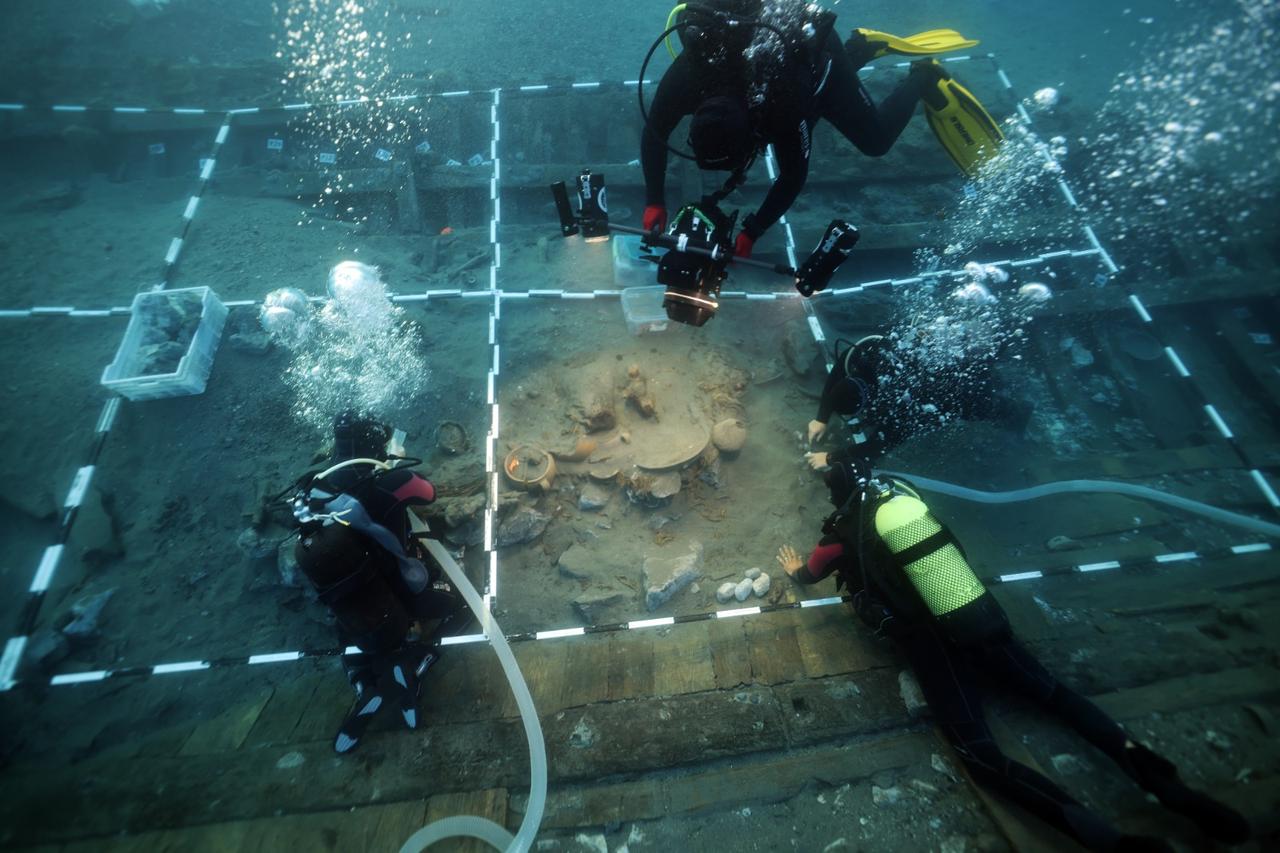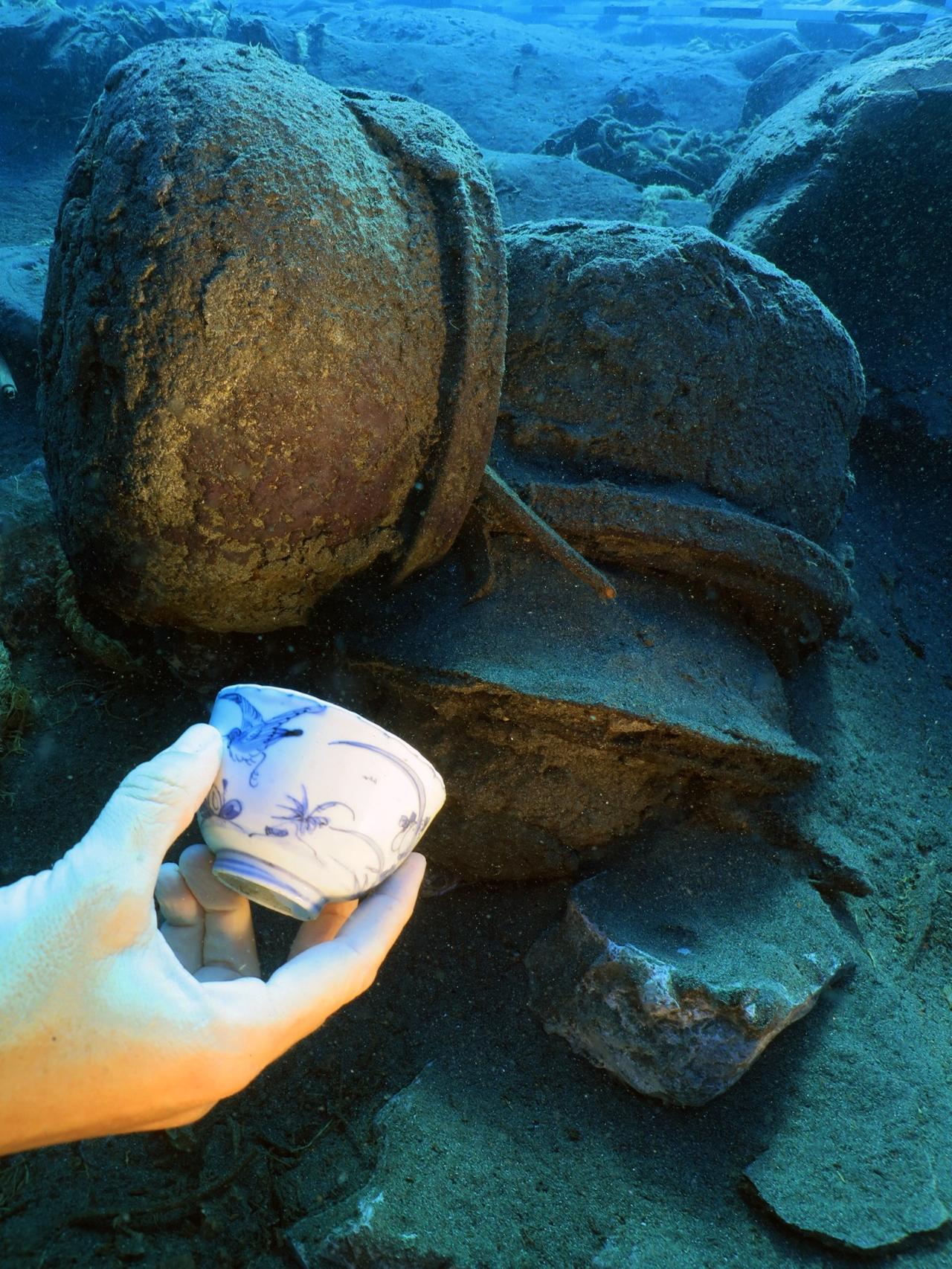An Ottoman ship that sank in the Mediterranean centuries ago has been uncovered with its cargo and military supplies intact, offering the first detailed underwater archaeological evidence of the empire’s naval presence and trade activity in the 17th century, Türkiye's Culture and Tourism Ministry announced on Sunday.
The excavation, part of Türkiye’s "Heritage for the Future" project led by the ministry, was directed by Professor Harun Ozdas with the assistance of Associate Professor Nilhan Kizildag and carried out in the waters off Kizlan in the Aegean province of Mugla.

According to the ministry, this is the only Ottoman shipwreck from the 17th century excavated in Türkiye.
Culture and Tourism Minister Mehmet Nuri Ersoy described the discovery as "one of the most striking examples of global underwater archaeology." Announcing the find in his post on X, Ersoy said, "We are tracing the footsteps of our ancestors not only on land but also at sea. With the Heritage for the Future project, we protect our unique heritage and pass it on to future generations."
"This wreck, which has surfaced from the depths of the Mediterranean after centuries, is the first example that carries Ottoman naval power and trade into the present day," he added.

Archaeologists identified the remains of a 30-meter-long and 9-meter-wide wooden vessel that sank after running aground.
The ship contained over 30 Ottoman rifles, more than 3,000 lead bullets, dozens of pistols, swords, and daggers, as well as 50 grenades. Researchers said no other known wreck in the Mediterranean carried such weaponry.
Alongside the weaponry, objects reflecting daily life were recovered, including copper pots, jugs, ladles, ceramic jars, wooden spoons, combs, leather flasks, and baskets. Notably, 135 clay pipe bowls produced in Istanbul’s Tophane district formed what experts identified as the largest Ottoman pipe collection discovered to date.

The excavation also revealed two chess sets and more than 40 pieces of Chinese porcelain, wrapped in bamboo packaging. Archaeologists said this is the largest such collection found in Turkish waters, pointing to the trade connections of the period.
Three seals were also recovered, including one inscribed with the name "Hudabende Abdullah Ahmed" and dated to 1667–1668, allowing researchers to firmly place the wreck in the late 17th century. The discovery of chestnuts on board suggested that the ship sank during the winter months.
Findings indicated that the vessel was damaged in combat before drifting ashore, where it caught fire and eventually sank. Experts described the ship as the first archaeological evidence documenting both the military and commercial presence of the Ottoman Empire in the Mediterranean during the 17th century.
Once the excavation is complete, the artifacts will be transferred to the Bodrum Museum of Underwater Archaeology.
The project is being conducted with the support of Dokuz Eylul University’s Research Center for Maritime History and Underwater Cultural Heritage.